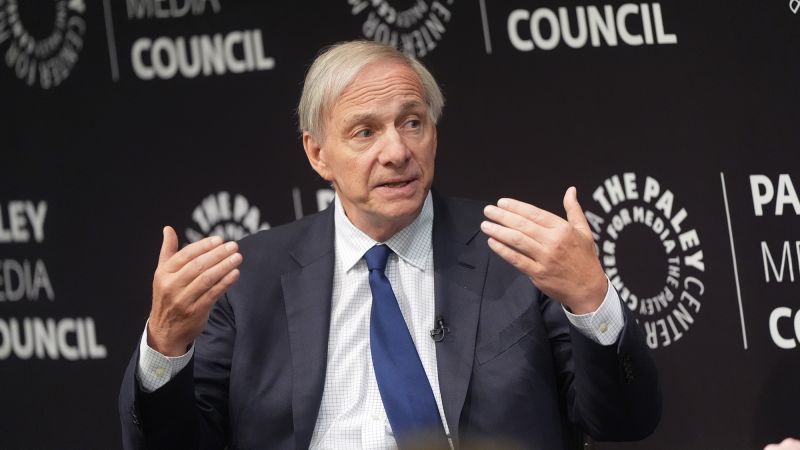Billionaire investor Ray Dalio has raised significant concerns regarding the stability of the United States economy, particularly in terms of its government debt crisis. In his newly released book, titled “How Countries Go Broke: The Big Cycle,” Dalio expresses his views about the current financial landscape, asserting that while the United States is not facing an immediate threat of a debt crisis, the long-term implications pose a serious risk. The alarm he sounds is not solely for national interest; the ramifications could extend globally, threatening the extensive economic network that relies on the U.S. economy’s stability.
Dalio emphasizes in his book that the U.S. government debt situation is precariously close to “the point of no return” and is moving towards a “death spiral.” He mentions that policymakers and investors often overlook historical patterns of economic collapse, leading to an unthinkable scenario that could suddenly unfold. According to Dalio, the current state of U.S. finances suggests a troubling trajectory, where increased government borrowing to finance spending becomes unsustainable, manifesting a situation wherein higher deficits lead to more bond issuance, which in turn escalates interest rates, creating a vicious cycle.
For years, economists and investors have warned about the implications of rising national deficits. However, this year has seen a particular shift in Wall Street’s perspective as economic policies stemming from President Donald Trump’s administration, including tariffs and ambitious tax reforms, have introduced fluctuations in the normally stable bond market. This altering of established financial norms indicates growing unease among investors regarding the attractiveness of U.S. assets and the overall economic outlook.
The urgency of Dalio’s message is underscored by the fact that interest rates on government bonds have started to climb, with spikes observed in May to their highest levels since 2023. The demand for U.S. bonds has waned as investors grow wary of the potential risks, resulting in a situation where the government faces either increased borrowing costs or a need to significantly curtail public spending, which could hollow out essential services and undermine economic stability.
Dalio articulates a cautious narrative regarding U.S. fiscal policy. He contends that while imminent threats may not be evident, the long-term outlook is alarmingly precarious. With the national debt-to-gross domestic product (GDP) ratio reaching new heights, climbing from 104% in 2017 to an estimated 123% by 2024, the financial stress on the economy becomes more palpable. This unprecedented level of debt raises important questions about the government’s capacity to service its obligations without crowding out essential funding for public services that citizens rely upon.
Furthermore, Dalio highlights the need for politicians to exercise prudence when it comes to fiscal policy. He cautions that neglecting the country’s finances during turbulent times could yield disastrous consequences. His stance echoes sentiments articulated by other financial experts, including renowned figures like Jamie Dimon, CEO of JPMorgan Chase, who recently predicted an inevitable “crack” in the bond market due to rising concerns over federal borrowing.
The discussions surrounding tax cuts, which initially provided bolstered market enthusiasm—largely benefiting Wall Street during Trump’s first term—have gained an unsettling dimension associated with increasing the federal deficit. The absence of adequate spending cuts to offset the reductions in tax revenues has led to critiques that financial decisions are not aligning with sustainable economic practices.
It is evident that there lacks a bipartisan consensus on how to address these mounting fiscal challenges, with political gridlock often stymying actionable solutions. As Dalio metaphorically illustrates, U.S. policymakers find themselves on a path fraught with risks, akin to navigating a boat on a collision course with treacherous rocks—aware of the impending danger but at an impasse over how to amend the course. Without addressing these concerns through collaborative efforts, the risk of a profound economic downfall looms larger.



